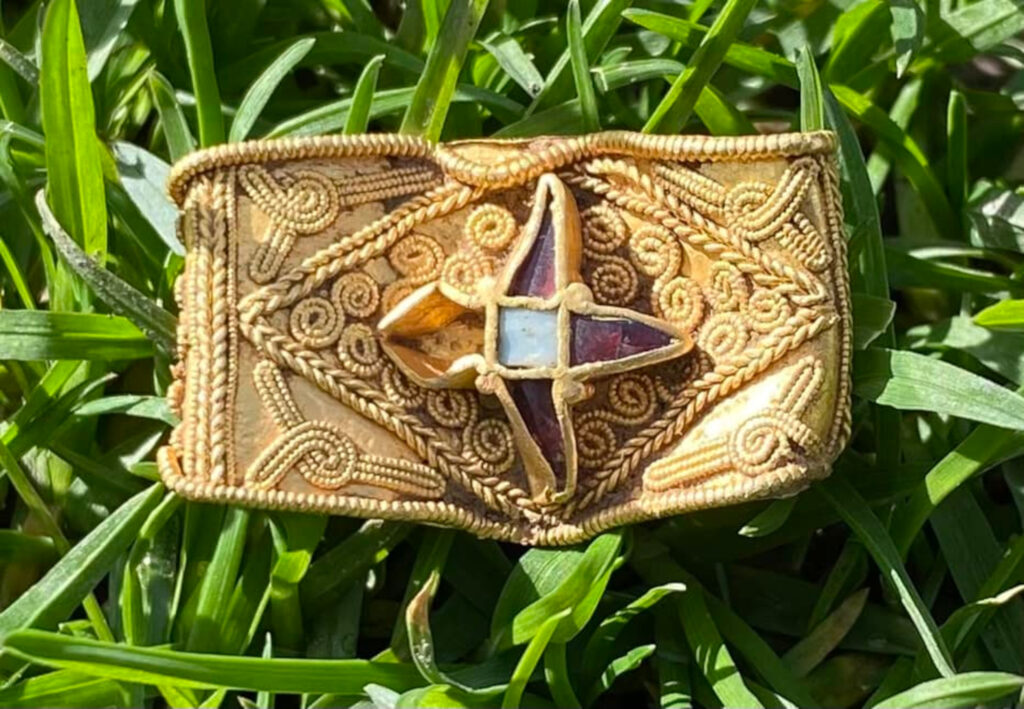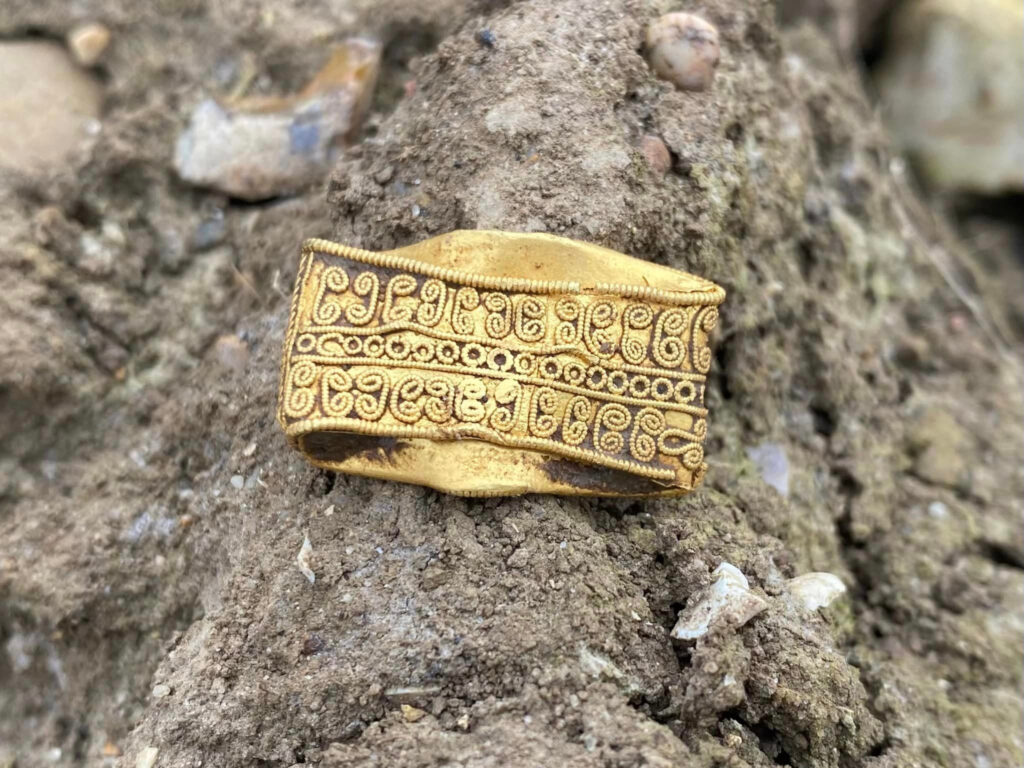A METAL detectorist was left stunned after unearthing a pure gold Anglo-Saxon ring – which dates back more than 1,400 years.
Dean Young had been exploring grounds in a field near Epping, Essex last month when he stumbled upon what he thought was a crushed gold-coloured tin.

However, after unearthing it properly and rinsing it through, the 47-year-old discovered that the item was actually an intricately-crafted golden ring.
Antiques dealer Dean took it to an expert yesterday who has since proclaimed it to be of Anglo-Saxon origin and approximately 1,422 years old.
The ring is now en-route to a Finds Liaison Officer (FLO) and is likely to end up in a museum exhibition.
Images of Dean’s find show the slim gold band with filigree patterns across it – and although the ring is bent in the middle due to age, it still proudly boasts a visible golden diamond shape in its centre.
Groups of golden swirls are dotted around the inside of the diamond while a cross sits in the middle, lined with ruby.
Some of the ruby appears to be missing, but does little to take away from the beauty of the ring as its borders are lined with plated gold.
Dean took to social media yesterday to show the rare find, writing: “Saxon gold ring I found in Essex a few weeks ago, handed in to FLO yesterday.”
The post received over 650 likes and dozens of comments from users left stunned by Dean’s lucky little find.

One person wrote: “That’s absolutely stunning. Incredible find – well saved, mate.”
“Great find. Gives us all hope when we see something like this.”
Another said: “Oh my goodness, look at the work in that. Just beautiful.”
A third commented: “Stunning. You might want to go back to where you found it and run the soil through a sieve to see if you can find the missing jewel inlays.
“If you know any match anglers ask if you can borrow a maggot riddle.
Another wrote: “Didn’t realise the Saxons did such complex and beautiful designs. I have one similar but it’s from Athens.”
A fifth commented: “Get a lottery ticket, pal. Your luck is clearly in”.
Speaking today Dean said: “It was found near Epping, in a field about five inches deep. I was with a few friends on 5 March.

“When I first dug it from the ground I thought it was a piece of squashed gold tin can because I couldn’t see it properly, being covered in mud.
“Once I picked it up, I thought ‘that’s heavy’ and then wiped the mud. [I saw] the beautiful filigree pattern.
“My friend and I were totally gobsmacked. The craftsmanship of the ring is exquisite, which the early Saxons were known for.
“A couple of experts I showed [it to] dated it to around the mid seventh century. It’s been handed in to a finds liaison officer and will probably end up in a museum.”
The Anglo-Saxons are thought to have lived in Britain from 410 AD to 1066 AD.
Well known for their jewellery, they often crafted brooches, beaded necklaces and adorned rings made out of bronze, silver and gold.
These were worn by those of high status and implied wealth and rank in Anglo-Saxon society.

